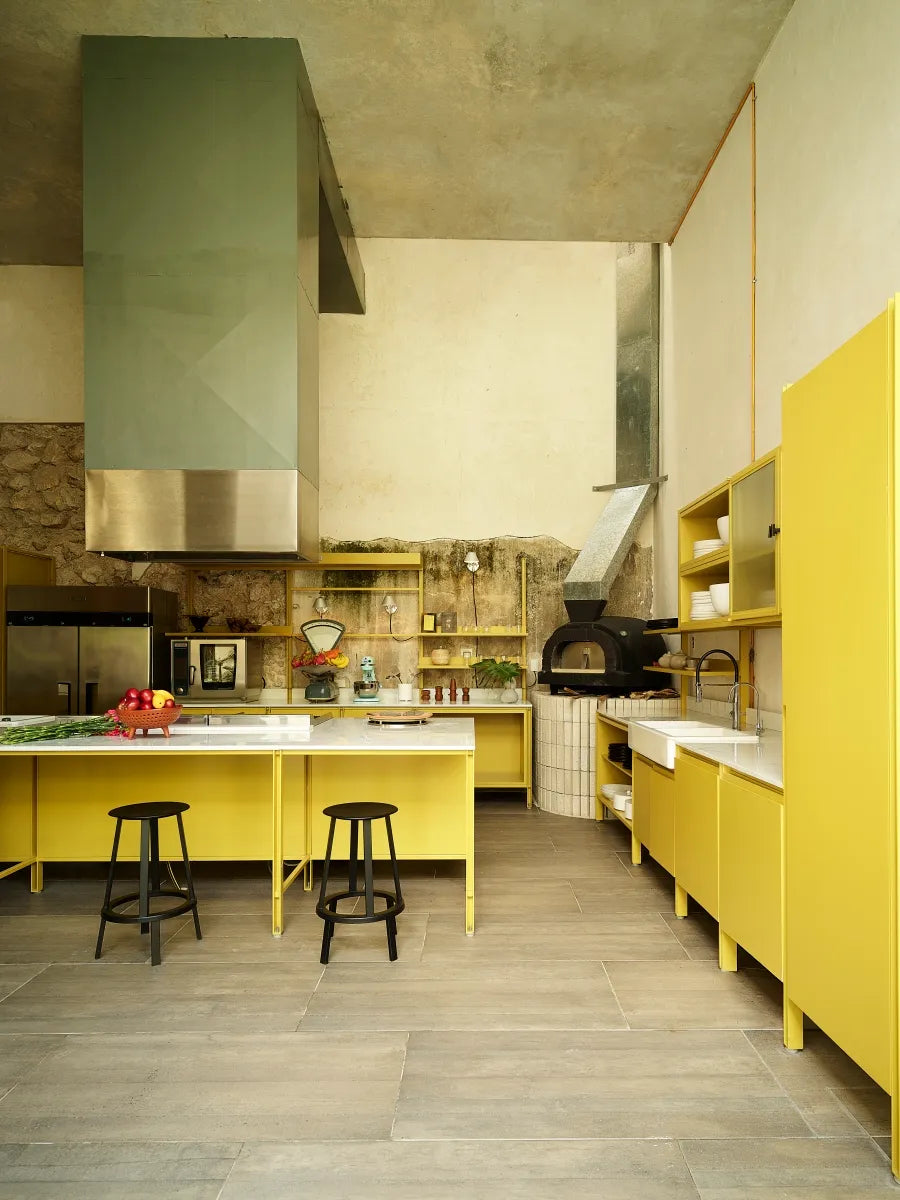
Bringing Life to Your Home: Incorporating Vibrant Colors in Interior Design
Interior design is a powerful tool for expressing personality and creating a unique atmosphere within your home. One of the most impactful ways to infuse energy and personality into your living space is by incorporating vibrant colors. In this article, we will explore the art of incorporating vibrant colors into your interior design, from selecting the right hues to finding the perfect balance for a harmonious and lively home.
-
The Power of Color in Interior Design
Color is a fundamental aspect of interior design that can influence mood, perception, and emotions. Vibrant colors, in particular, can breathe life into a space, creating an environment that is stimulating, energetic, and full of character.
-
Choosing the Right Vibrant Colors
The first step in incorporating vibrant colors into your interior design is selecting the right hues. Consider your personal preferences and the mood you want to convey in each room. Here are some vibrant color options and their associated emotions:
-
Red: A bold and passionate color, red can add warmth and energy to a space. It's ideal for areas where you want to stimulate conversation and activity, such as dining rooms and living rooms.
-
Yellow: Yellow is cheerful and uplifting, evoking feelings of happiness and positivity. It works well in kitchens, home offices, and areas where you want to encourage creativity.
-
Blue: Blue is calming and serene, making it perfect for bedrooms and bathrooms. Vibrant blues can add a refreshing touch to these spaces without overwhelming them.
-
Green: Green represents nature and tranquility. Incorporating vibrant green accents in living rooms or home libraries can create a harmonious and balanced atmosphere.
-
Orange: Orange is energetic and dynamic. It can be used in small doses to add excitement to a room or as a focal point in spaces like home gyms or playrooms.
-
Purple: Purple exudes luxury and sophistication. Consider using vibrant purples in bedrooms or as accent colors in living rooms for a touch of elegance.
-
-
Balance and Harmony
While vibrant colors can transform a room, it's essential to strike a balance to avoid overwhelming the space. Here are some tips for achieving harmony with vibrant colors:
-
Accent Walls: Consider painting one wall in a vibrant color while keeping the others neutral. This creates a focal point without overwhelming the entire room.
-
Colorful Accessories: Incorporate vibrant colors through accessories such as throw pillows, rugs, artwork, and decorative items. These accents can be easily changed or rotated to keep the room feeling fresh.
-
Complementary Colors: Pair vibrant colors with complementary or analogous shades to create a harmonious color scheme. For example, if you choose a vibrant red, balance it with soft shades of gray or beige.
-
Natural Light: Ensure that your vibrant colors are well-lit by natural light. Large windows and strategically placed mirrors can enhance the effect of vibrant hues.
-
-
Monochromatic Color Schemes
For a bold and cohesive look, consider monochromatic color schemes. Monochromatic design involves using varying shades and tones of a single color. For example, you could create a dramatic living room by using different shades of vibrant blue, from navy to aqua.
-
Color Psychology
To fully harness the power of vibrant colors, it's essential to understand color psychology. Different colors can evoke specific emotions and moods. Here are some examples:
-
Red: Passion, energy, and excitement. It can increase appetite and stimulate conversation, making it suitable for dining rooms and social spaces.
-
Yellow: Joy, optimism, and warmth. It can create a cheerful and inviting atmosphere in kitchens and living areas.
-
Blue: Calmness, serenity, and trust. Ideal for bedrooms and bathrooms where relaxation is paramount.
-
Green: Balance, nature, and harmony. Green is associated with growth and renewal, making it suitable for spaces where you seek relaxation and connection to nature.
-
Orange: Enthusiasm, creativity, and energy. It's perfect for spaces where you want to encourage activity and creativity.
-
Purple: Luxury, spirituality, and creativity. Purple can add a touch of sophistication to bedrooms and creative spaces.
-
-
Textiles and Patterns
Vibrant colors can also be introduced through textiles and patterns. Consider vibrant curtains, upholstery, and bedding to add pops of color to your home. Mix and match patterns with solids to create a dynamic and visually stimulating environment.
-
Furniture and Statement Pieces
Incorporating vibrant colors into furniture and statement pieces can be a bold design choice. Opt for a vibrant sofa, accent chairs, or a colorful statement piece of art that serves as the focal point of a room.
-
Experiment with Temporary Options
If you're unsure about committing to a vibrant color scheme, experiment with temporary options. Removable wallpaper, peel-and-stick tiles, and colorful wall decals allow you to test different looks without a long-term commitment.
-
Personal Expression
Vibrant colors are an excellent way to express your personality and interests. Consider incorporating colors that resonate with you and reflect your unique style, whether it's a love for bold reds or a passion for soothing blues.
-
Conclusion
In the world of interior design, vibrant colors are a potent tool for creating memorable and engaging spaces. When used thoughtfully and balanced with neutral tones, these colors can breathe life into your home, evoke specific emotions, and reflect your personality. Whether you opt for vibrant walls, colorful accessories, or eye-catching furniture, don't be afraid to explore the world of vibrant colors to transform your living space into a lively and captivating haven. Remember that the key to successful interior design with vibrant colors is finding the perfect balance that suits your taste and lifestyle.
